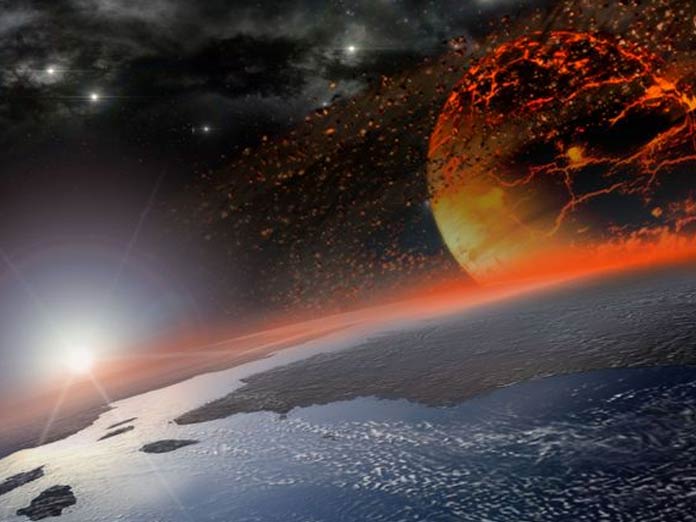Collision that formed Moon made life possible on Earth: Study

Earth most likely received the bulk of its carbon, nitrogen and other elements essential for life from the planetary collision that created the Moon over 44 billion years ago, according to a study led by Indianorigin scientists
Washington: Earth most likely received the bulk of its carbon, nitrogen and other elements essential for life from the planetary collision that created the Moon over 4.4 billion years ago, according to a study led by Indian-origin scientists.
"From the study of primitive meteorites, scientists have long known that Earth and other rocky planets in the inner solar system are volatile-depleted. But the timing and mechanism of volatile delivery has been hotly debated," said Rajdeep Dasgupta from the Rice University in the US. "Ours is the first scenario that can explain the timing and delivery in a way that is consistent with all of the geochemical evidence," said Dasgupta, co-author of the study published in the journal Science Advances. In a series of experiments, Rice University graduate student Damanveer Grewal gathered evidence to test a long-standing theory that Earth's volatiles arrived from a collision with an embryonic planet that had a sulphur-rich core.
The sulphur content of the donor planet's core matters because of the puzzling array of experimental evidence about the carbon, nitrogen and sulphur that exist in all parts of the Earth other than the core. "The core doesn't interact with the rest of Earth, but everything above it, the mantle, the crust, the hydrosphere and the atmosphere, are all connected. Material cycles between them," Grewal said. One long-standing idea about how Earth received its volatiles was the "late veneer" theory that volatile-rich meteorites, leftover chunks of primordial matter from the outer solar system, arrived after Earth's core formed. While the isotopic signatures of Earth's volatiles match these primordial objects, known as carbonaceous chondrites, the elemental ratio of carbon to nitrogen is off.
Earth's non-core material, which geologists call the bulk silicate Earth, has about 40 parts carbon to each part nitrogen, about twice the 20-1 ratio seen in carbonaceous chondrites. Grewal's experiments, which simulated the high pressures and temperatures during core formation, tested the idea that a sulphur-rich planetary core might exclude carbon or nitrogen, or both, leaving much larger fractions of those elements in the bulk silicate as compared to Earth. Grewal examined how much carbon and nitrogen made it into the core in three scenarios: no sulphur, 10 per cent sulphur and 25 per cent sulphur.
"Nitrogen was largely unaffected. It remained soluble in the alloys relative to silicates, and only began to be excluded from the core under the highest sulphur concentration," he said. Carbon, by contrast, was considerably less soluble in alloys with intermediate sulphur concentrations, and sulphur-rich alloys took up about 10 times less carbon by weight than sulphur-free alloys. Using this information, along with the known ratios and concentrations of elements both on Earth and in non-terrestrial bodies, the researchers designed a computer simulation to find the most likely scenario that produced Earth's volatiles.
Finding the answer involved varying the starting conditions, running about one billion scenarios and comparing them against the known conditions in the solar system today. "What we found is that all the evidence -- isotopic signatures, the carbon-nitrogen ratio and the overall amounts of carbon, nitrogen and sulphur in the bulk silicate Earth -- are consistent with a moon-forming impact involving a volatile-bearing, Mars-sized planet with a sulphur-rich core," Grewal said. Dasgupta said better understanding the origin of Earth's life-essential elements has implications beyond our solar system.
"This study suggests that a rocky, Earth-like planet gets more chances to acquire life-essential elements if it forms and grows from giant impacts with planets that have sampled different building blocks, perhaps from different parts of a protoplanetary disk," he said. "It shows that life-essential volatiles can arrive at the surface layers of a planet, even if they were produced on planetary bodies that underwent core formation under very different conditions," Dasgupta said. It does not appear that Earth's bulk silicate, on its own, could have attained the life-essential volatile budgets that produced our biosphere, atmosphere and hydrosphere, he said.




















